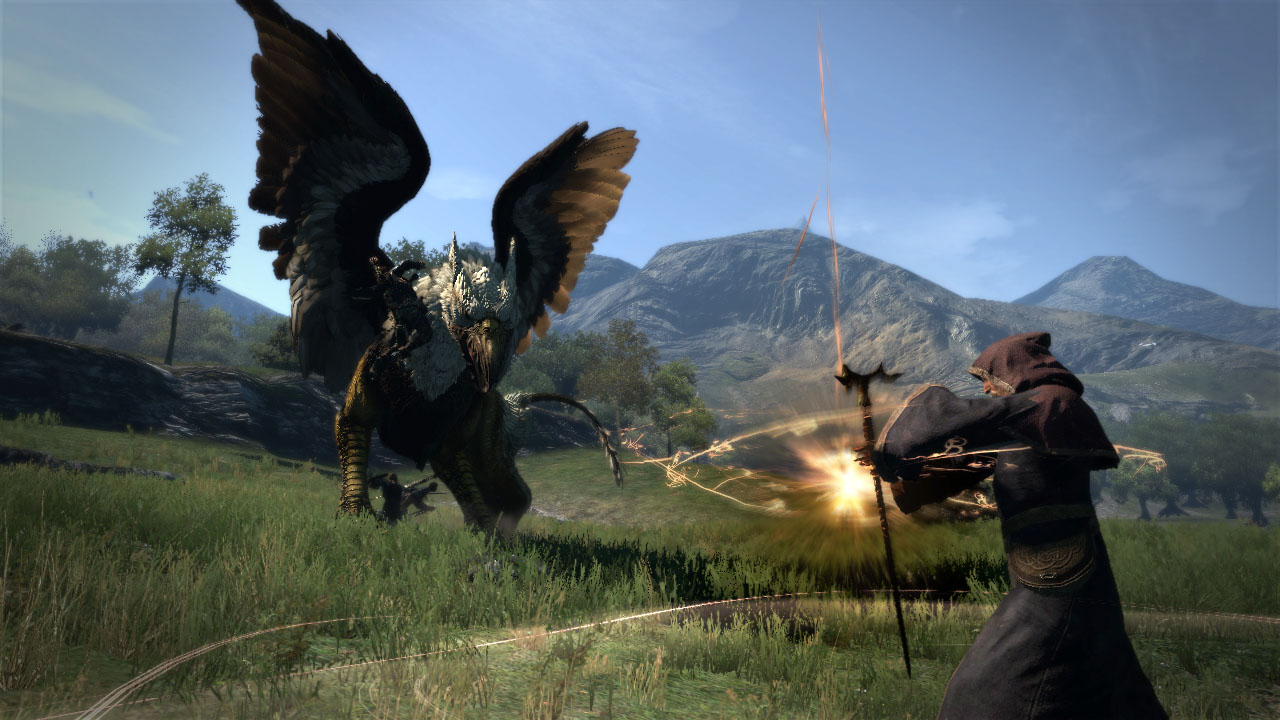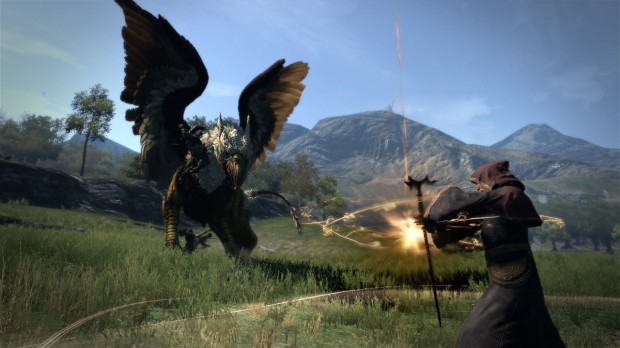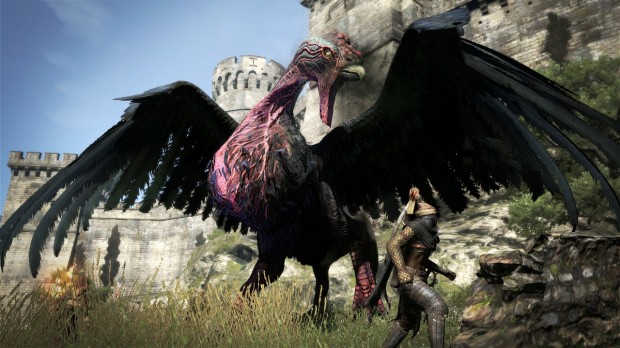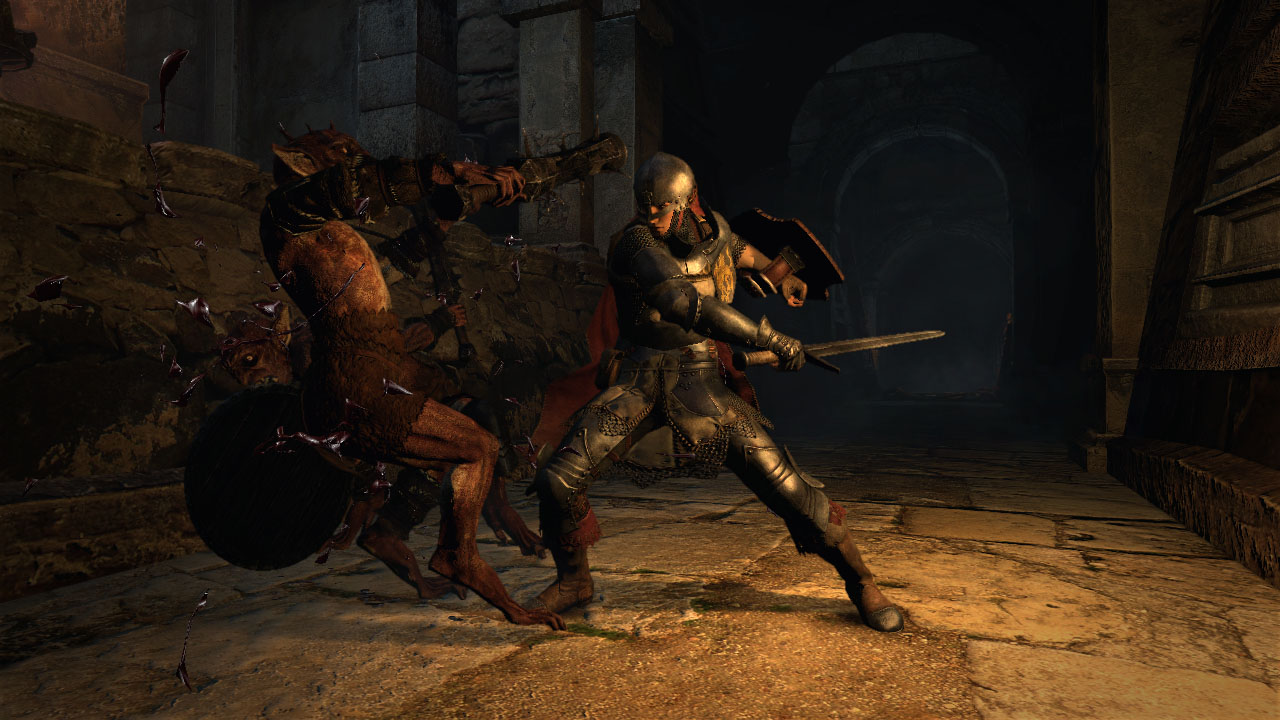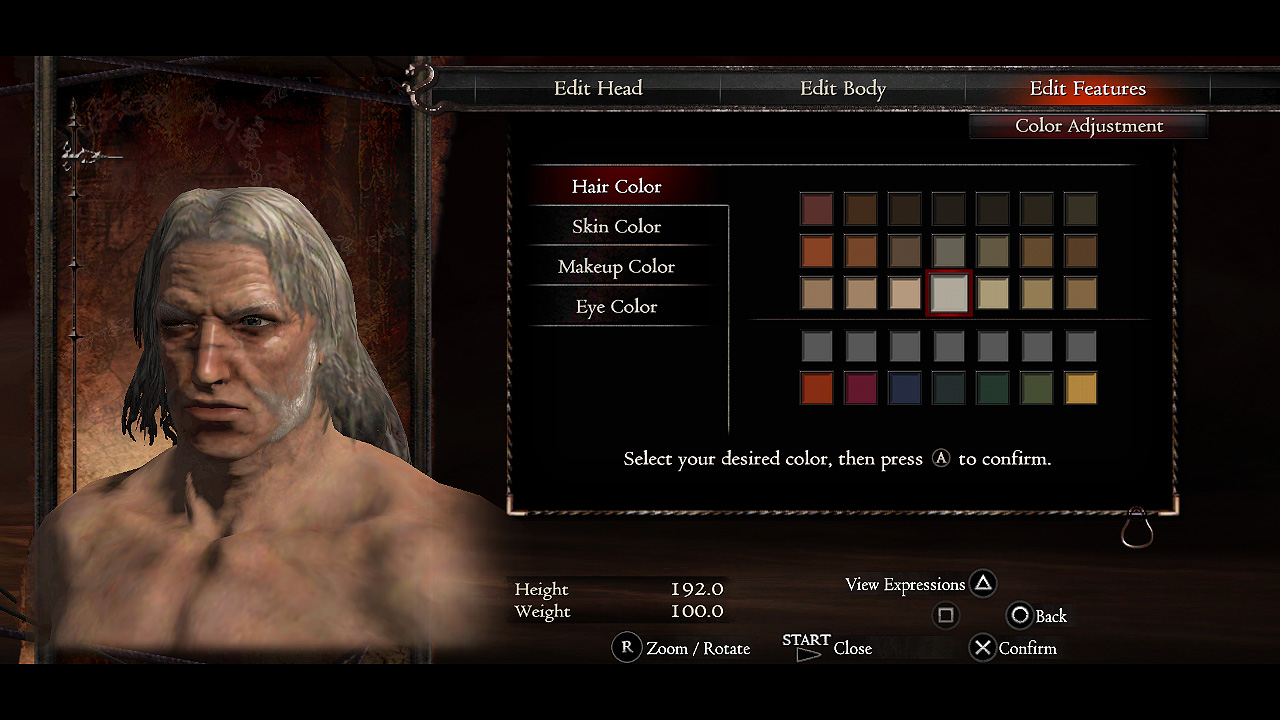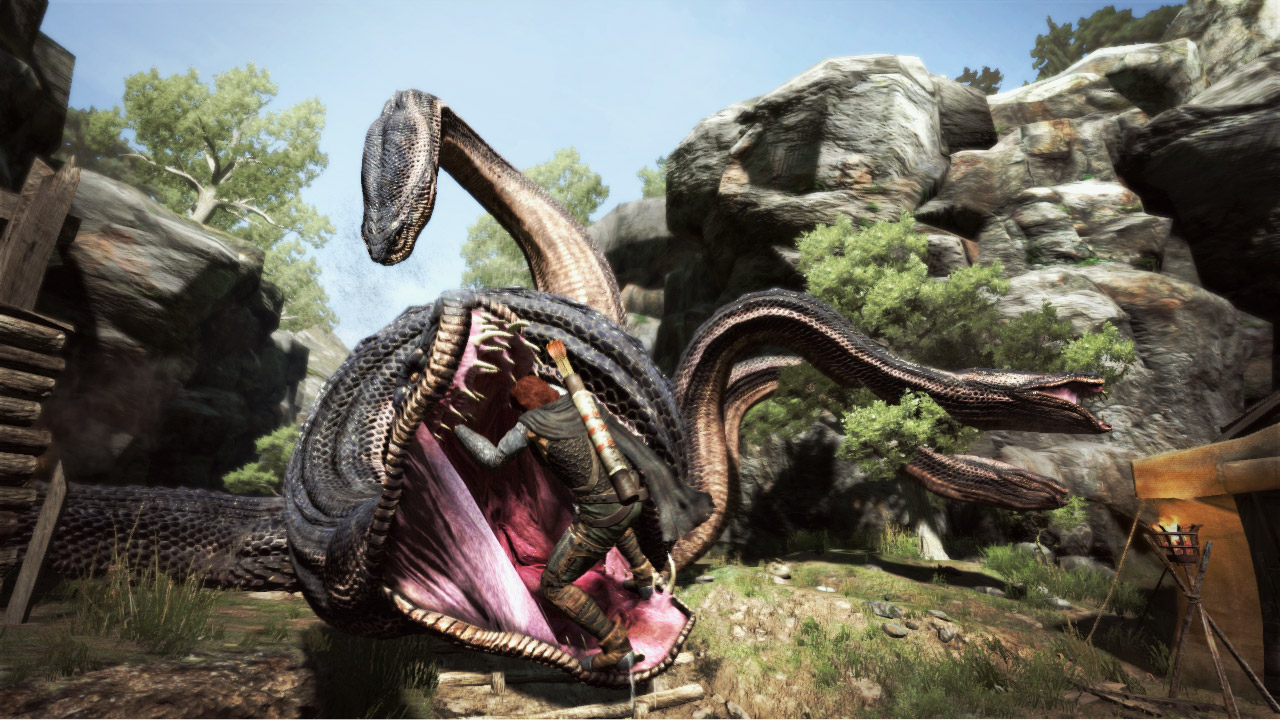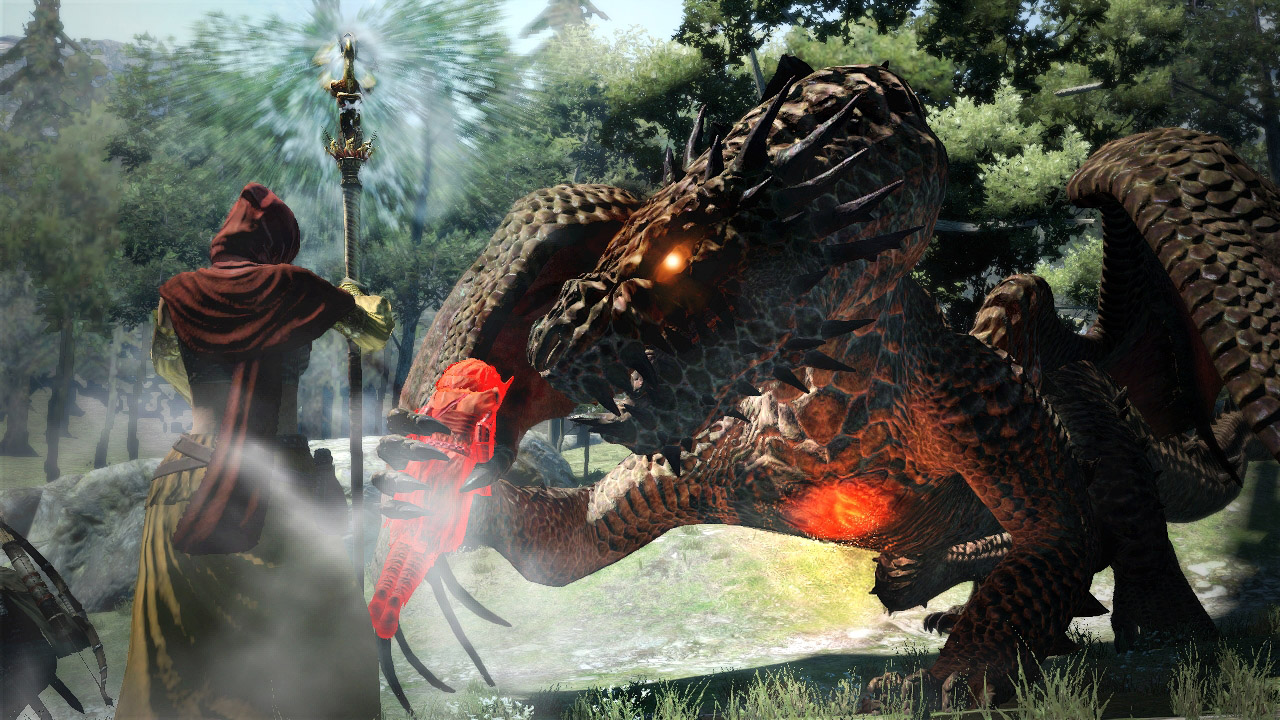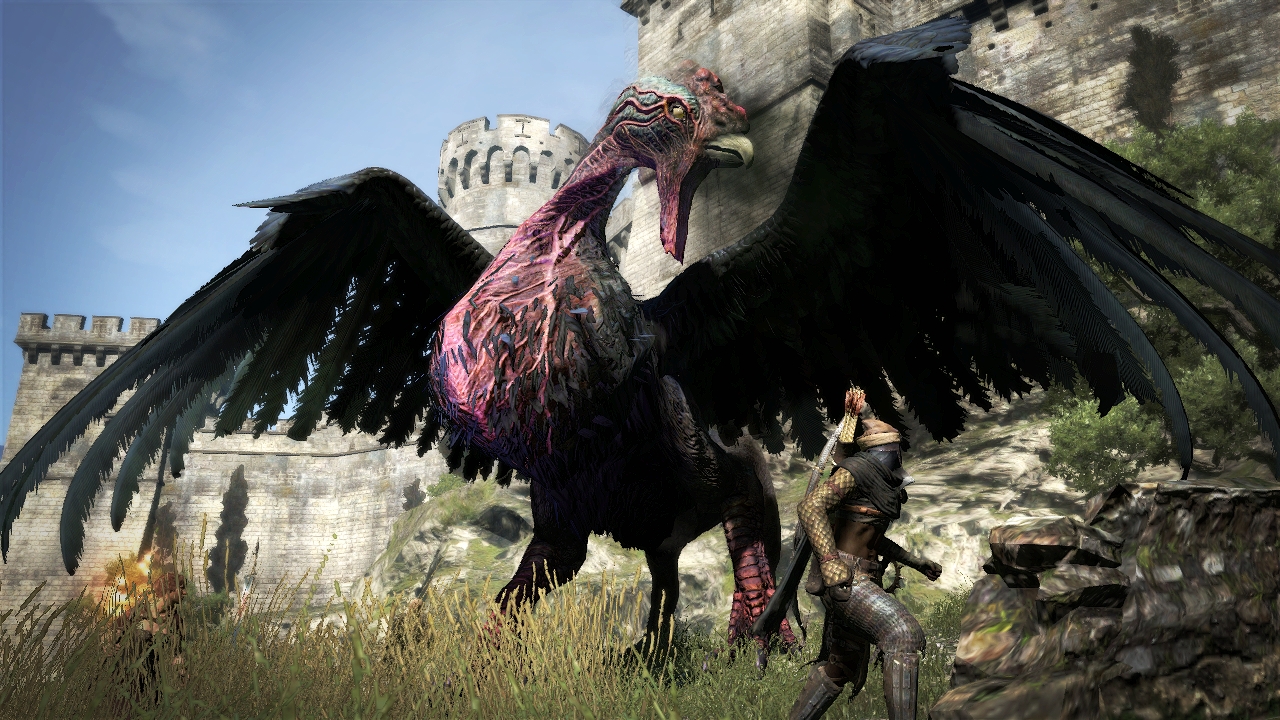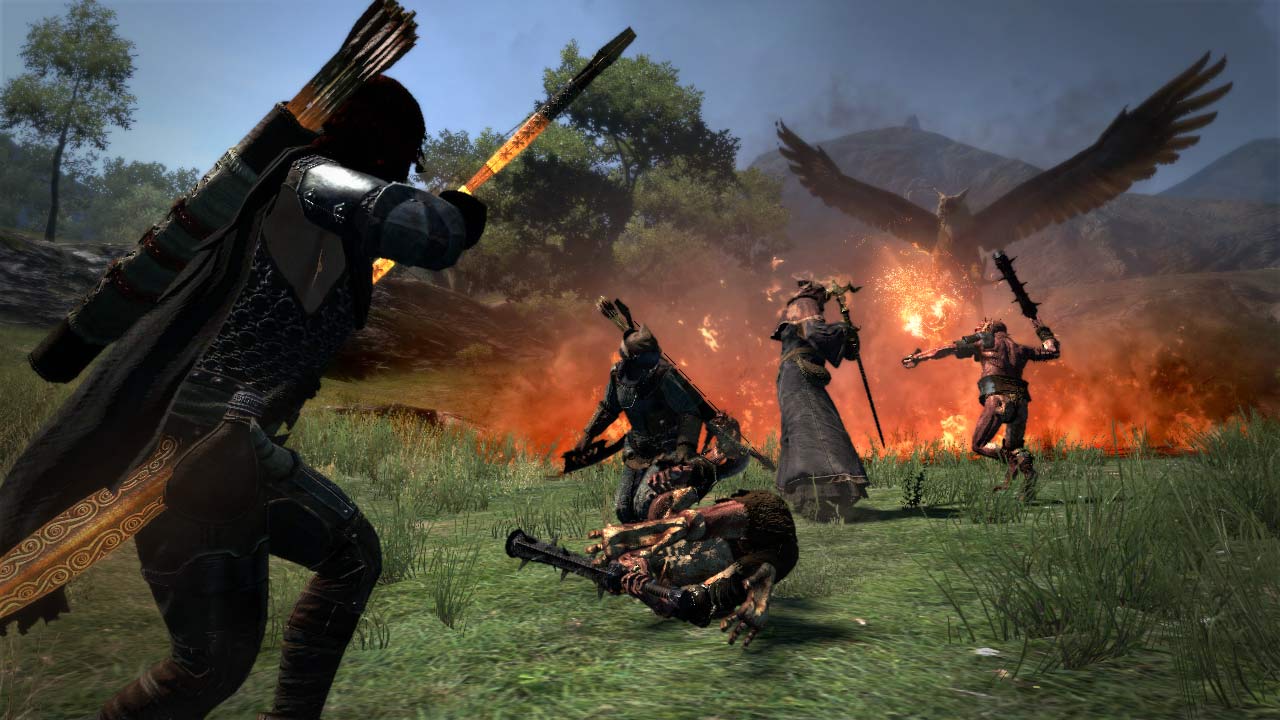I deeply treasure both Demon’s Souls and Dark Souls. If you don’t know why that’s important – feel free to skip this paragraph. The reason that it’s worth mentioning is that, while this is a very different game in many ways, its deeply-challenging gameplay is what will ultimately polarize most people, placing you strictly in the camp of “love it” or “hate it”.
Nearly a month ago, I was completely unaware of Dragon’s Dogma. Its development progressed entirely beneath my radar, so when a friend sent a few videos my way, I was instantly intrigued – but equally cautious. On paper this game looked absolutely extraordinary. It seemed to take the best of eastern and western action RPG’s, while being developed by a renowned team and a company that more often than not pushes out above average releases. Yet for some reason the expected hype was near completely non-existent, which seemed strange considering it was directly following the highly successful (in their own ways) duo of Skyrim and Dark Souls; titles it seemed to be so clearly channeling in one way or another. So surely, it must be broken?
The answer: Yes and no. To be clear – I absolutely love this game, and genuinely enjoyed my time with it thus far, but I’ll be first to admit that it’s just not for everyone. Let’s start with the basics, or in this case – the bad.
Best I can tell, the story only exists to provide a basic setting for the games unique NPC-based party system, open world, and numerous other mechanics. The basic premise is that a dragon of epic proportions has been brought into the world, as it does every yada generations, and via what is either bad luck or destiny (I honestly don’t know which) – it landed on your face. Shortly thereafter it plucked out and munched on your heart, and as a result you’re now an “Arisen” – who is challenged to defeat said jerk dragon, with the help of your newfound ability to summon and control a race of unemotional slave-soldiers known as “Pawns”.
On the visual side, Dragon’s Dogma is not a gorgeous game by today’s standards. The palette is mostly brownish, the textures are muddled, there’s plenty of clipping to go around, and the lighting engine might have been more impressive on the first Xbox. The characters are unattractive with a ridiculous attempt at lip syncing. Most camera movement results in noticeable tearing, and it’s often made extremely clear that the engine simply can’t keep up with the immense world that the designers clearly worked very hard to build.
That said, like most open world games, while close inspection reveals innumerable flaws – at a macro scope the world is actually quite pretty, and conveys its classic fantasy setting well. The enemy models are a high point, generally impressive and fun to watch, more so as they grow into the larger and more active mobs that you’ll find as your adventure progresses further on.
Both the sound and music in Dragon’s Dogma are equally serviceable, but in no way memorable (with exception of the campy title-screen track, which serves mainly to remind you that this game was made by our quirky friends in Japan). And while the game is entirely voiced, 90% of what you’ll be hearing is your own party members echoing the same lines (although there are many) countless times throughout the game, as they both learn and educate you on how to best the various mobs you’ll encounter. It’s initially very useful, but more than a tad repetitive. More on this later.
This is a deep game with many systems and a wide variety of loot – all accessible via menus and an interface that are generally effective while not flashy…
This is a deep game with many systems and a wide variety of loot – all accessible via menus and an interface that are generally effective while not flashy. I’ve found that this alone can break games (I’m looking at you Fable), so I’m happy to report that isn’t the case here. You can save anywhere (which is really important), and the mapping and quest tracking is useful, but doesn’t go out its way to give away every last detail to the degree that’s common in most modern RPGs (which I appreciate).
Before I move on to the mechanics that do in fact make this game so incredibly fun and unique, the last element worth mentioning is the controls. After first watching videos of such amazing potential – my first cynical speculation was simply “looks great – controls must be broken”. I’m happy to say that I was mostly wrong.
Getting around actually feels fine, and while combat took some time to master and at times I really wished that aiming spells was more precise (it’s a slightly awkward hybrid lock-on system that feels more like painting heat seeking rockets on a fighter jet than shooting arrows at an ogre), eventually it felt natural enough.
It’s also worth mentioning that I found that the options menu had a decent array of useful tweaks that let me configure it to be much more comfortable, including the ability to turn the primary triggers into the primary skill modifiers (as opposed to the harder to reach bumpers). These details helped a lot.
And now, on to the good and the great.
The biggest standout element of Dragon’s Dogma is easily its wholly original take on a party-based single-player RPG. While this (next to the controls) was one of the aspects I initially suspected would likely be broken – it turned out to be the element I enjoyed most about the game. The idea starts out simple, but grows in complexity you realize that it is so cleverly integrated into every aspect of the game, from combat, to quests, to looting and harvesting, to bringing a competitive element to a seemingly single player game.
You’ll start by creating your own controllable character (using an adequate customization systems similar to most other RPGs), followed by a “Pawn”, who is effectively a mostly uncontrolled NPC pet. You’ll develop their look (Protip: you’re going to have to settle for “ugly”), choose a name and a voice, a basic starting vocation (fighter, strider, or mage), and answer a series of somewhat arbitrary questions as to how they would likely act in various situations. This character will persistently stay and level right along with you throughout your entire experience in Dragon’s Dogma.
Beyond your playable character and your primary NPC Pawn, you’ll also bring along two other characters of your choosing, known as “Support Pawns”, to build out a complete and balanced party of your own design. This is where it gets interesting. These characters are actually unique Pawns created by other players, just like your own. But, unlike your own, these two will not level with you, forcing you to frequently choose new allies throughout your adventure. Selecting your Support Pawns is done by either launching into a special area where you can summon them at will (via filters, leaderboards, etc.), or my favorite method – by simply happening across them on the many roads or throughout the towns of the game world. That’s right, the game seeds your entire world with NPC’s created and developed by other players. So very awesome.
Choosing your Support Pawns was a surprisingly fun activity, as there’s an unexpected variety of information available to help you make the choice that best fits your style of party. Beyond the visual aspect of the Pawns, you can review their vocation, pre-selected skills, their complete set of gear (including any upgrades), their knowledge of the various mobs and quests in the game, and more.
At any time you can choose Pawns that are up to your level for free, or alternatively you can invest a bit of somewhat rare currency known as Rift Crystals to purchase Pawns above your level, helping you progress faster. The tradeoff is that Rift Crystals are slow to obtain (fairly rare loot), and the loading screen tip text teases you with the fact that some rare items in game may only be purchased with Rift Crystals (personally I never came across this, so for all I know it could just be mocking me – which wouldn’t be out of character). Also, if any of these Pawns die in battle, and aren’t revived within a short time, they’re lost – and your hard earned Rift Crystals with them.
While I loved all of these aspects of the Pawn system, where it really got me was the first time I rested at an Inn, and when I awoke my Pawn reported that he had been off adventuring with someone else (I’ll admit, I was a little bit jealous). What’s better was when he revealed that he had a gift for me (in this case a nice sword), obtained some new battle intel, and had been positively reviewed by the other player. While I had a vague idea of the asynchronous community features of the game prior to this experience, this was the point (aka free loots) where it really really started to sink in.
As mentioned above, the game provides a number of ways to ensure your Pawns are desirable, and a competitive element by allowing you to work your way up the Pawn leader-board. You can do this by creating an attractive looking character (trust me: more difficult than it sounds, think Oblivion), selecting a well thought-out and sought-after skill set, investing in great upgraded weapons and armor, and by just playing more with them, which will cause them to learn more about the individual quests and monsters in the game – which helps them fight better, in addition to offering you helpful questing and world tips as you journey.
In other words – building up your own NPC Pawn for other players, is a bit of a meta-game in itself – but doing so also helps your single player game, as they’ll be a more effective member of your own party. Win-win (and correct me if I’m wrong – but entirely a new idea).
Once you’re happy with your party of Pawns, the real game begins as you begin to explore the vast world. Dragon’s Dogma is a huge 3rd person action game, and while not quite as open and accessible as games like Skyrim – there’s plenty to explore.
Unfortunately, this is where the polarization begins. Dragon’s Dogma is a game about risk-reward. The reward, is the triumphant feeling of winning difficult fights (more in a minute), exploring dark and dangerous areas for loots, and progressing your levels and vocations. The risk, is the difficult and drawn out combat, confusing deaths, and a slew of mechanics purposefully designed from the ground up to disconnect from modern convention in exchange for good old fashion (as in PC RPG’s of the 90’s) challenge.
One of the most widely recognized examples of this is the huge impact time of day has in Dragon’s Dogma. As night approaches, the game frankly gets scary. You quickly realize that you’re outnumbered, and the world comes alive in a very eerie way as soon as your vision drops to almost nothing. Unlike most modern games, fast-forwarding time (outside of an Inn) is not an option.
Similarly, magical fast-travel via your map is unavailable, safe towns and outposts are spread far and few between, cliffs and water are equally plentiful and dangerous, and you’re constantly weighing your options as to how to progress safely. Most of these mechanics are simply absent from modern game design, but each add weight to every decision you make – simultaneously ensuring the game provides a truly unique and memorable experience.
That said, I see how some people can argue that these are outdated mechanics that just add up to poor design. At the same time, the feelings (mostly anxiety followed ultimately by triumph) invoked by these simply surpass anything I experienced in games like Skyrim. Again, this goes back to – you either love it, or you don’t – there really is no in-between. It is worth mentioning that while this game is difficult, I personally didn’t find it quite as difficult as either Dark Souls or Demon’s Souls.
Combat in Dragon’s Dogma, similar to (and in part because of) its Pawn system, is highly unique…
Combat in Dragon’s Dogma, similar to (and in part because of) its Pawn system, is highly unique. Combat plays out in real-time, with you controlling a single character, with up to 6 unique triggered abilities that you choose. There are no cool-downs, and a single stamina bar controls the flow of your actions. If you drain all of your stamina you’ll be winded and vulnerable, illustrating yet another element of risk/reward in Dragon’s Dogmas design.
At any time you can issue very basic commands to your Pawns (Go, Come, Help) – but ultimately it’s the design of your team, your past experience with them, and their own understanding of the enemy that dictates how efficiently battle flows. The composition of your party is entirely up to you, utilizing your playable character, your primary Pawn, and the 2 other-player-created Support Pawns of your choice. The classes (vocations) are both classic (“mage”) and novel (“magic archer”), and provide plenty of room for experimentation, with a good variety of available skills and gear to choose from.
To switch up your party you can purchase new vocations for both your playable character and your primary Pawn at any time by using Discipline points, which are earned as you gain levels. I found myself switching my playable character between about 3 classes, leaving my primary Pawn as some form of tank, and selecting various support Pawns to try out every other class, resulting in varied levels of effectiveness. I really enjoyed using this system to find skills that synergized nicely, for example using my fighter to eject fleeing enemies into the air so that I could target them more easily with spells while they were unable to block. Even simple things like healing spells add a fresh element in this game, as rather than targeted heals – they’re simply auras left on the battlefield that you’ll need to run through to benefit from.
I can honestly say that prior to this game I’ve never been a fan of single player party-based action RPGs (Star Ocean, Tales, etc.) In these games I’ve often felt that I personally have little control of the fight, and am just along for the ride. While at times in Dragon’s Dogma my team did in fact get in my way, more often than not I enjoyed what they brought to the table – and loved experimenting with their mechanics, focusing on tactics before an adventure, studying the outcome, and adjusting as necessary (if you loved this in Final Fantasy XII, you’ll probably love it here too).
Beyond your own party makeup, the enemies in Dragon’s Dogma are another of its core strengths. While your adversaries are comprised of the most very basic of fantasy tropes (bandit, goblin, ogre, harpy, cyclops, golem, etc.), the game goes out of its way to ensure that each type provides a unique and exciting encounter (at least initially).
One major element of this, is the fact that your team learns (and talks incessantly) about the individual weaknesses that will ultimately streamline your battles. You’ll quickly discover that without its tusks, cudgel and helmet, a cyclops is little more than a single eye waiting to be poked out. To assist in this, your team will literally climb over every inch of that cyclops, prodding it from every angle (and of course you can do the same) – producing highly entertaining and engaging battles from start to finish – sometimes taking 20 minutes or more to best a single large creature. In any other game this would be a boss. In Dragon’s Dogma – they respawn regularly.
The same is true for nearly every unique mob type in the game, of which they are many. One of my favorite aspects of this system was the fact that not only did this make my NPC team fight more effectively, but it also taught me how to fight better myself. The result was that progression meant more than higher stats (blatant grindy time investment), but rather knowledge that changed how I played the game – which brings me to my next point.
Unlike similar games like Oblivion and Skyrim, enemies in this game don’t gain levels along with your own progression. In other words – venture too far (which isn’t really very far at all), and you’ll die. While some will likely hate this trait, I personally find that it’s the only way to actually relish the fruits of my own heavy investment in character development. In other words – coming back when I’m level 20 to stomp goblins feels fantastic. Even better is that I’m not just stomping them because my magic power is higher (it’s definitely a factor), but rather because both my team and I are now fully aware of how to best defeat them. I’ll admit that it’s subtle, and in part an illusion – but at the same time, the effect is pretty awesome.
More than 2,500 words later, I’ve barely scratched the surface of this game. I’ve yet to mention the crafting system (hundreds of objects can be crafted into countless things), the cool campaign quests, the variety of loot, or the fact that while the game has your typical gathering systems (plants, mining, etc), the Pawn system is so perfectly integrated that they’ll just do it all for you (seriously, fantastic feature). There is so much to do and explore in this game, and it’s clear that DLC is on the way as well.
I think above all, my favorite thing about Dragon’s Dogma is that it is a game full of choices – most of which have real weight. Hell, even the physical size of your character, something that does nothing in basically any modern game, has well defined purpose in Dragon’s Dogma. It’s things like this that constantly left me with the feeling of “Wow, nobody does that!” that consistently kept me engaged, and still has me going back for more.
Overall
If you’re a fan of risk-reward, if you’re nostalgic for PC RPG’s of the 90s, but with a unique twist, or if you’re just an admitted gaming masochist – do yourself a favor and buy this game. I want more!

